REALTIME FLOWS  U. Kern: n/a cfs
U. Kern: n/a cfs
 L. Kern: 1341 cfs
L. Kern: 1341 cfs
 E.W: 312 cfs
E.W: 312 cfs
 U. Owens: 108 cfs
U. Owens: 108 cfs  L. Owens: 496 cfs 09/02/19 1:15 PM PST
L. Owens: 496 cfs 09/02/19 1:15 PM PST
The best way to kill a fish
56 posts
• Page 1 of 4 • 1, 2, 3, 4
The best way to kill a fish
So, I was reading the Trout Fly Fish Report from the Troutfitter in Mammoth and I saw a picture of a fish lying in the dirt, including bits of dirt on the ‘face up’ side which leads me to believe that the fish flopped around some on the dirt before the picture was taken. So, I replied to report with what I thought was a very polite request to re-consider posting pictures like that. Here is my email verbatim.
“It's nice to see the report and the big fish pics you post, it makes one want to get up there and fish, which of course is the point of the report. However, putting pictures of fish lying in the dirt makes me wonder why you would do such a thing, even if the guy wasn't with one of your guides (Brian Holland, 18" rainbow). It just perpetuates the continuation of very bad fish handling skills. Please re-consider posting such photos. Thanks.”
I didn’t expect a reply, or if there was a reply, that it would be equally polite just saying something like ‘thanks for the comment’ or whatever. After all, they are running a business and why would they want to alienate potential clients? Instead this is the reply I got from the owner – verbatim. Remember, this is a reply from the owner of a fly shop that guides in the area.
“I doubt laying a fish on the grass has much different impact than holding and repositioning in ones hands to get the right photo as I see all the time ?? ('Not to mention the occasional dropping of fish with the latter.) All my reading says time out of water is far and away the primary factor, which is probably faster laying the fish on the grass than taking the traditional photo(s) holding the fish up in the air. Is your "very bad fish handling skills" based on some mortality studies or just your personal assessment?
Have to call 'em as I see em.
Thanks, Kent
The Trout Fly and Troutfitter
Mammoth Lakes, CA”
I’ve read an awful lot of research about fish mortality and the two main contributing factors are keeping the fish out of the water for too long (as he suggests) but also removal of the protective slime that coats fish, whether by handling with dry hands or certainly by laying them in the dirt. I know that there are some people who have worked in fish biology here or who are related to others who are (Norcal Bob?), so I’m wondering if anyone remembers a particular research report that might compare lying in the dirt with dry hand handling vs. wet hand handling, etc. that I can send him.
Or, any thoughts on the owner of a fly shop who apparently thinks it is ok to lay fish in the dirt because there are worse ways to kill the fish? Apparently this guy has only been fly fishing for something like ten or twelve years. I was thinking of posting this on the Drake forum where there are many more anglers and guides with decades of experience compared to Kent. Maybe they can make some suggestions to him. Thoughts on that?
Btw, since sending me that email he has removed that picture from his fish report. I knew I should have saved it, but I was on a fishing trip. *!
“It's nice to see the report and the big fish pics you post, it makes one want to get up there and fish, which of course is the point of the report. However, putting pictures of fish lying in the dirt makes me wonder why you would do such a thing, even if the guy wasn't with one of your guides (Brian Holland, 18" rainbow). It just perpetuates the continuation of very bad fish handling skills. Please re-consider posting such photos. Thanks.”
I didn’t expect a reply, or if there was a reply, that it would be equally polite just saying something like ‘thanks for the comment’ or whatever. After all, they are running a business and why would they want to alienate potential clients? Instead this is the reply I got from the owner – verbatim. Remember, this is a reply from the owner of a fly shop that guides in the area.
“I doubt laying a fish on the grass has much different impact than holding and repositioning in ones hands to get the right photo as I see all the time ?? ('Not to mention the occasional dropping of fish with the latter.) All my reading says time out of water is far and away the primary factor, which is probably faster laying the fish on the grass than taking the traditional photo(s) holding the fish up in the air. Is your "very bad fish handling skills" based on some mortality studies or just your personal assessment?
Have to call 'em as I see em.
Thanks, Kent
The Trout Fly and Troutfitter
Mammoth Lakes, CA”
I’ve read an awful lot of research about fish mortality and the two main contributing factors are keeping the fish out of the water for too long (as he suggests) but also removal of the protective slime that coats fish, whether by handling with dry hands or certainly by laying them in the dirt. I know that there are some people who have worked in fish biology here or who are related to others who are (Norcal Bob?), so I’m wondering if anyone remembers a particular research report that might compare lying in the dirt with dry hand handling vs. wet hand handling, etc. that I can send him.
Or, any thoughts on the owner of a fly shop who apparently thinks it is ok to lay fish in the dirt because there are worse ways to kill the fish? Apparently this guy has only been fly fishing for something like ten or twelve years. I was thinking of posting this on the Drake forum where there are many more anglers and guides with decades of experience compared to Kent. Maybe they can make some suggestions to him. Thoughts on that?
Btw, since sending me that email he has removed that picture from his fish report. I knew I should have saved it, but I was on a fishing trip. *!
Nature always wins.
> miles = < people
Camp in the mountains, not the left lane!

> miles = < people
Camp in the mountains, not the left lane!

-

Papasequoia - Posts: 4655
- Joined: July 5th, 2008, 10:14 pm
- Location: East Side of the Sierra Nevada
Re: The best way to kill a fish
I too saw the pic & wondered the same thing, why would they post a picture like that.
# of fishing days 2014, 12
- fshflys
- Posts: 322
- Joined: December 8th, 2008, 10:18 am
- Location: San Juan Cap
Re: The best way to kill a fish
I wondered about that as well. It was so out of place for them. Gotta say, though, I'm surprised at Kent's response. Even if he thought you were full of crap, it doesn't make sense to challenge a customer. Fortunately, there's other shops in town.
"We're a cross between our parents and hippies in a tent...."
180 Degrees South
180 Degrees South
-
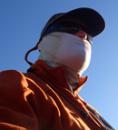
WanderingBlues - Posts: 5299
- Joined: December 2nd, 2009, 10:49 am
- Location: Living in a Tin Can
Re: The best way to kill a fish
Send it.
"Tomorrow is the most important thing in life. Comes into us at midnight very clean. It's perfect when it arrives and it puts itself in our hands. It hopes we've learnt something from yesterday."
John Wayne
John Wayne
-
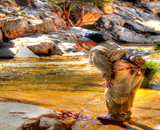
Wildman - Site Admin
- Posts: 3747
- Joined: August 17th, 2008, 2:07 pm
The best way to kill a fish
I saw that photo and was bummed also. This was the first time I've seen anything like that from an outfit that has been a good resource, and to my knowledge, a good good river steward. I guess I was willing to cut 'em a break. However, I'm glad to hear you did the right thing by writing a letter and am even more pleased to hear the image was removed.
Kent's response to you was certainly less than great - terrible in fact. As far as posting on the Drake or publicly calling him out - to what end? If the goal is to educate and make him aware of the power and responsibility he holds as owner of shop with a strong following, I would consider trying to back up your argument with an article or two. There by giving the guy a chance to "right the ship" before potentially doing some damage to his and many others livelihoods. My two cents. That said, you have inspired me to write him an email as well addressing the fish in the dirt photo.
Tom
Kent's response to you was certainly less than great - terrible in fact. As far as posting on the Drake or publicly calling him out - to what end? If the goal is to educate and make him aware of the power and responsibility he holds as owner of shop with a strong following, I would consider trying to back up your argument with an article or two. There by giving the guy a chance to "right the ship" before potentially doing some damage to his and many others livelihoods. My two cents. That said, you have inspired me to write him an email as well addressing the fish in the dirt photo.
Tom
Fish always lose by being "got in and dressed." It is best to weigh them while they are in the water. The only really large one I ever caught got away with my leader when I first struck him. He weighed ten pounds. —Charles Dudley Warner
-
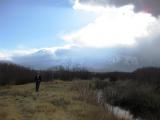
silverlaker - Posts: 726
- Joined: April 4th, 2011, 10:14 pm
- Location: los angeles
Re: The best way to kill a fish
Jon,
I think you did the right thing in pointing out the incorrect way to handle a trout that is going to be released supposedly unharmed. I think it is too bad that Kent took offence to you pointing out the improper way to handle a fish. So many guides out there don’t like it when you point out ways of miss handling trout that are possibly harmful to the long term survival of them. I think there are a few people on this site that fish with Kent or his guides. Maybe they will have something to say.
Years ago I pointed out on the FNN site the same thing to a guide in Bridgeport who was doing the same thing. He did not like me criticizing his fish handling skills. I notice that he has removed the photos and the thread is no longer on that site and he no longer post any reports.
I guess just like any other business there are good and bad people. To become a licensed guide in the state of California you need only to pay the state an annual fee, and post a surety bond. The good ones have put in a lot more time and effort and are much more professional then the not so good ones.
Mark
I think you did the right thing in pointing out the incorrect way to handle a trout that is going to be released supposedly unharmed. I think it is too bad that Kent took offence to you pointing out the improper way to handle a fish. So many guides out there don’t like it when you point out ways of miss handling trout that are possibly harmful to the long term survival of them. I think there are a few people on this site that fish with Kent or his guides. Maybe they will have something to say.
Years ago I pointed out on the FNN site the same thing to a guide in Bridgeport who was doing the same thing. He did not like me criticizing his fish handling skills. I notice that he has removed the photos and the thread is no longer on that site and he no longer post any reports.
I guess just like any other business there are good and bad people. To become a licensed guide in the state of California you need only to pay the state an annual fee, and post a surety bond. The good ones have put in a lot more time and effort and are much more professional then the not so good ones.
Mark
Make Fly Fishing Great Again!
-
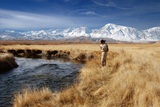
fly addict - Posts: 2560
- Joined: August 3rd, 2008, 1:57 pm
- Location: In your honey hole!
Re: The best way to kill a fish
There is really five major things that contribute to delayed mortality. The first two were mentioned: 1) time out of water, 2) loss of the protective slime coat, but also 3) lactic acid buildup from playing a fish too long, 4) damage to internal organs from squeezing them too hard during handling, and 5) wounds from their hooking.
When it comes to loss of the slime coat, anything touching the fish like; your hands, a net, the earth, rocks, or grass, anything, wet is far perferable to it being dry. The fish has evolved in liquid world and is use to bumping into things wet. The slime coat can handle things wet up to a point. That said even something wet can remove some slime coat. Just smell your hands after touching a fish, that is it's slime coat your smelling. Dry surfaces touching it's skin almost immediately removes all the slime coat. Their bodies react and try to produce additional slime to replace it. Sometimes the damage is done and a fungal infection sets in in that area. This fungal infection does not always kill the fish but it's survival is probably no better than a 75:25 chance.
I know we are in a blood sport even when we practice the best catch and release tactics. Studies estimate that even using the best catch and release tactics overall survival is around 96%, that is including all 5 factors. But laying a Trout on dry ground is terrible. If you are going to do such a thing at least wet the surface first, mud is better than dirt. Wet grass is far less damaging than mud or wet rocks.
I usually just leave them in the rubber net and take that shot, boring yes, but it does far less damage. Occasionally with a fish of unusual coloring or size I will take a hero shot. It is best to leave the fish in the net while you turn on the camera and get everything ready. This is also best as a two man operation, one on the fish, one on the camera. Wet your hands, first grab the tail firmly, but don't use all your strenght as it can lead to bruising of the muscles. Place your second hand underneat it's upper belly and beneath it's head. Lift the fish quickly from the water and take the shot. If it struggles violently, it is best to place it (or drop it) back in the water quickly in the net, allow a couple of seconds to calm down, and try again. This can be done in a matter of a couple of seconds. I have been told this analogy. Imagine yourself running a race the time it took to land the fish. Now hold your breath for as long as it takes to take the picture. That's what it's like for the fish and being cold blooded they recover even more slowly than a warm blooded animal like ourselves.
I see many anglers use one hand to hold the fish around it's belly to take a picture. This is not good for any fish that is bigger than about 12". Especially bad if that fish is 18" or bigger because you are no longer supporting it's weight naturally. Remember fish live in virtually a weightless world. Their internal organs are such that they are supported neutrally in the water, but not outside the water. The single handed method, can cause bruising and bleeding of the internal organs that increases delayed mortality.
These are some of the things I have learned over the years talking with biologists, hatchery employees, and reading publications on the matter. I do the best I can myself, but even using the best techniques, everyone is responsible for some delayed mortality including myself. Do the best you can, think before you act, and practice the best possible catch and release tactics for the future of the sport.
Jimbo
When it comes to loss of the slime coat, anything touching the fish like; your hands, a net, the earth, rocks, or grass, anything, wet is far perferable to it being dry. The fish has evolved in liquid world and is use to bumping into things wet. The slime coat can handle things wet up to a point. That said even something wet can remove some slime coat. Just smell your hands after touching a fish, that is it's slime coat your smelling. Dry surfaces touching it's skin almost immediately removes all the slime coat. Their bodies react and try to produce additional slime to replace it. Sometimes the damage is done and a fungal infection sets in in that area. This fungal infection does not always kill the fish but it's survival is probably no better than a 75:25 chance.
I know we are in a blood sport even when we practice the best catch and release tactics. Studies estimate that even using the best catch and release tactics overall survival is around 96%, that is including all 5 factors. But laying a Trout on dry ground is terrible. If you are going to do such a thing at least wet the surface first, mud is better than dirt. Wet grass is far less damaging than mud or wet rocks.
I usually just leave them in the rubber net and take that shot, boring yes, but it does far less damage. Occasionally with a fish of unusual coloring or size I will take a hero shot. It is best to leave the fish in the net while you turn on the camera and get everything ready. This is also best as a two man operation, one on the fish, one on the camera. Wet your hands, first grab the tail firmly, but don't use all your strenght as it can lead to bruising of the muscles. Place your second hand underneat it's upper belly and beneath it's head. Lift the fish quickly from the water and take the shot. If it struggles violently, it is best to place it (or drop it) back in the water quickly in the net, allow a couple of seconds to calm down, and try again. This can be done in a matter of a couple of seconds. I have been told this analogy. Imagine yourself running a race the time it took to land the fish. Now hold your breath for as long as it takes to take the picture. That's what it's like for the fish and being cold blooded they recover even more slowly than a warm blooded animal like ourselves.
I see many anglers use one hand to hold the fish around it's belly to take a picture. This is not good for any fish that is bigger than about 12". Especially bad if that fish is 18" or bigger because you are no longer supporting it's weight naturally. Remember fish live in virtually a weightless world. Their internal organs are such that they are supported neutrally in the water, but not outside the water. The single handed method, can cause bruising and bleeding of the internal organs that increases delayed mortality.
These are some of the things I have learned over the years talking with biologists, hatchery employees, and reading publications on the matter. I do the best I can myself, but even using the best techniques, everyone is responsible for some delayed mortality including myself. Do the best you can, think before you act, and practice the best possible catch and release tactics for the future of the sport.
Jimbo
- Jimbo Roberts
- Posts: 1329
- Joined: October 19th, 2011, 7:47 pm
- Location: San Antonio Texas
Re: The best way to kill a fish
I am kind of surprised at the response, it reeked of "you don't know sh-t". If I were to go into Kent's shop looking for a net I would most likely be pointed in the direction of a net with a rubber bag - why ?- because a rubber bag will not remove as much of a fishes protective slim - right ? So yeah , time out of water may be the top killer of fish but the rest of the list of things that will kill a released fish still matter.
The guy spends a lot of time on the water and in contact with a lot of good fishermen, he should know better.
That said , he runs a good shop with good people working there. He should have just said " you know , you are probably right that's not all that great for the fish" and been done with it.
The guy spends a lot of time on the water and in contact with a lot of good fishermen, he should know better.
That said , he runs a good shop with good people working there. He should have just said " you know , you are probably right that's not all that great for the fish" and been done with it.
-

duckdog - Posts: 693
- Joined: April 13th, 2009, 8:32 pm
- Location: Oceanside ,Ca
Re: The best way to kill a fish
I sent him an email addressing my concerns - concerns that became amplified when I clicked on the spin fishing report. Don't check it out unless you want to see a bunch of dead fish on stringers or people squeezing the * out of trout. Is this the same owner? I know the shop was for sale...
Fish always lose by being "got in and dressed." It is best to weigh them while they are in the water. The only really large one I ever caught got away with my leader when I first struck him. He weighed ten pounds. —Charles Dudley Warner
-

silverlaker - Posts: 726
- Joined: April 4th, 2011, 10:14 pm
- Location: los angeles
Re: The best way to kill a fish
Sign of the times. No one gives a crap about what anyone else thinks, and you (we) just found out the hard way. And why should Troutfitter give a crap. Take a look around. Society allows alot of things to occur now that wouldn't have been allowed "back in the day." It's commonplace now for people to "challenge" and "confront" others - no matter the reason and no matter if its verbal, physical, or over the internet. And if you retaliate in some manner, what happens? You're now the bad guy. Either way, you lose. I can only assume the air he breathes is better than the air the rest of us have to breathe.
I guess if I didn't like it - and I don't like it just as much as the rest of you, I'd steer clear of frequenting Troutfitter and all that place encompasses. No reason not to. Besides, NO EASTERN SIERRA SHOP CAN BEAT THE PRICES FOR GEAR THAT CAN BE FOUND ON THE INTERNET. I get the best quality gear I can find by shopping on the Net. And at the same time I spend no money on fuel, add no wear and tear to my truck, and I don't have to leave the comfort of my own home.
Best place to hurt a business - in the wallet. Don't buy anything from Troutfitter and his buddies. This one's easy.
I guess if I didn't like it - and I don't like it just as much as the rest of you, I'd steer clear of frequenting Troutfitter and all that place encompasses. No reason not to. Besides, NO EASTERN SIERRA SHOP CAN BEAT THE PRICES FOR GEAR THAT CAN BE FOUND ON THE INTERNET. I get the best quality gear I can find by shopping on the Net. And at the same time I spend no money on fuel, add no wear and tear to my truck, and I don't have to leave the comfort of my own home.
Best place to hurt a business - in the wallet. Don't buy anything from Troutfitter and his buddies. This one's easy.
"You can't keep a good Dr down."
Days On The Salt in 2017 - 114
Days On The Salt in 2018 - 39

Days On The Salt in 2017 - 114
Days On The Salt in 2018 - 39

-

DrCreek - Posts: 1417
- Joined: January 31st, 2008, 9:46 pm
- Location: CA
Re: The best way to kill a fish
“I doubt laying a fish on the grass has much different impact than holding and repositioning in ones hands to get the right photo as I see all the time ?? ('Not to mention the occasional dropping of fish with the latter.) All my reading says time out of water is far and away the primary factor, which is probably faster laying the fish on the grass than taking the traditional photo(s) holding the fish up in the air. Is your "very bad fish handling skills" based on some mortality studies or just your personal assessment?
Have to call 'em as I see em.
Thanks, Kent
The Trout Fly and Troutfitter
Mammoth Lakes, CA”
So he says laying fish on the ground has about the same impact as holding it out of the water for a picture. Then says, from his reading, time out of the water is far and away the primary factor(fish mortality). I wonder if laying on dry ground, AND taking the time to snap a picture, has any meaning to him.
It doesn't make sense. I'm guessing his defense mechanism kicked in before his brain engaged. Being a fly shop owner, I assume he knows proper C&R techniques. Maybe he was having a bad day when he responded.
briansII
-

briansII - Posts: 4902
- Joined: September 3rd, 2008, 12:39 pm
- Location: Central Ca.
Re: The best way to kill a fish
Jon, I don't know of any scientific studies evaluating trout handling techniques by placing them on various surfaces. I'll check with Chris and see if he knows of any. Chris just started grad school at University of Arkansas last week and doesn't have internet access at his home yet, so it might be a bit until he gets all set up in his new surroundings.
- NorcalBob
- Posts: 1620
- Joined: March 2nd, 2009, 9:27 pm
Re: The best way to kill a fish
Kent is a tool.
/thread
/thread
"Whenever I see a photograph of some sportsman grinning over his kill, I am always impressed by the striking moral and aesthetic superiority of the dead animal to the live one."
-Edward Abbey
-Edward Abbey
-

anacrime - Posts: 1385
- Joined: April 20th, 2008, 5:16 pm
- Location: Denver, CO
Re: The best way to kill a fish
I had an experience with some staff at that shop this past summer. It was a simple question we asked (price matching another fly shop), and it turned into a drawn out discussion with two guys behind the counter,and it really put a bad taste in my mouth for that store. Since then I have stopped shopping there. I always would save $$ to spend there cause it was like 'spending on vacation' but now I just stopped buying junk I didn't need and saving myself a dime.
I'm all in support of the local business vs. online, and I will gladly pay more for something if the CUSTOMER SERVICE is good.
I remember back when I was studying business in college, I read a statement that said, if a person has a positive experience they will tell 1-3 people about it, but if they have a negative experience, they will tell 11 people about it. Magnify that with review sites, and the power of the interent, and to me, a small business should NEVER in any way make a customer, or a potential customer feel like they are the 'bad guy'
If one doesn't stand up for what they think is right, then we all loose. Of course we will all disagree, we're people, but there is a time and place for that. My mama used to say, "Everyone has a right to an opinion, but not every one has the right to voice it" - but that was 'old school thinking' when "kids were supposed to be seen and not heard..."
I'm all in support of the local business vs. online, and I will gladly pay more for something if the CUSTOMER SERVICE is good.
I remember back when I was studying business in college, I read a statement that said, if a person has a positive experience they will tell 1-3 people about it, but if they have a negative experience, they will tell 11 people about it. Magnify that with review sites, and the power of the interent, and to me, a small business should NEVER in any way make a customer, or a potential customer feel like they are the 'bad guy'
If one doesn't stand up for what they think is right, then we all loose. Of course we will all disagree, we're people, but there is a time and place for that. My mama used to say, "Everyone has a right to an opinion, but not every one has the right to voice it" - but that was 'old school thinking' when "kids were supposed to be seen and not heard..."
"Many go fishing all their lives without knowing that it is not fish they are after." ~ Henry David Thoreau
Mark 1:17
Mark 1:17
-
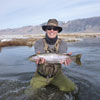
flocktothewall - Posts: 207
- Joined: May 25th, 2012, 6:26 pm
Re: The best way to kill a fish
The sad part is it wasn't even a shop photo. It was a "send in" from a customer. The guy probably bought a Winston and matching Abel reel, Simms G4's, and matching wading boots and they wanted to keep him coming back.
I agree with other statements- vote with your checkbook.
I agree with other statements- vote with your checkbook.
"We're a cross between our parents and hippies in a tent...."
180 Degrees South
180 Degrees South
-

WanderingBlues - Posts: 5299
- Joined: December 2nd, 2009, 10:49 am
- Location: Living in a Tin Can
56 posts
• Page 1 of 4 • 1, 2, 3, 4
Who is online
Users browsing this forum: Google [Bot] and 71 guests

